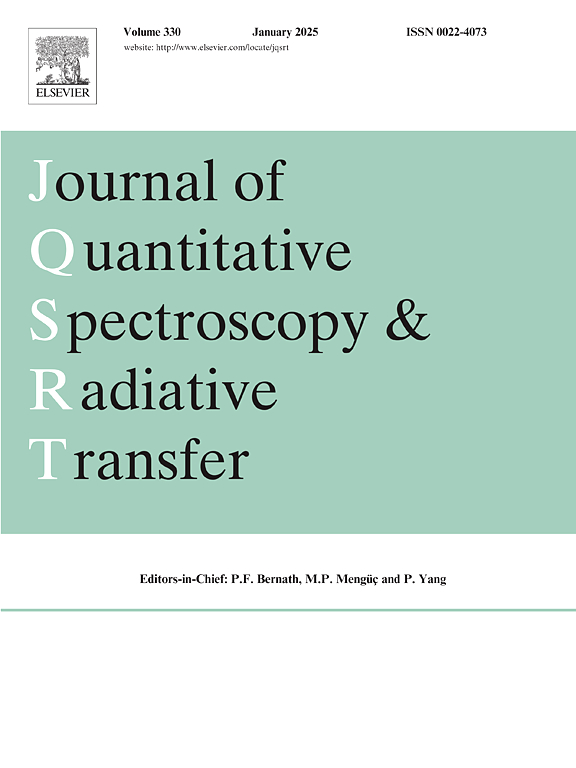The atmospheric radiative transfer simulator ARTS, version 2.6 — Deep python integration
IF 2.3
3区 物理与天体物理
Q2 OPTICS
Journal of Quantitative Spectroscopy & Radiative Transfer
Pub Date : 2025-03-31
DOI:10.1016/j.jqsrt.2025.109443
引用次数: 0
Abstract
The atmospheric radiative transfer simulator ARTS is a software for computing atmospheric absorption, scattering, the transfer of radiation through an atmosphere, and sensor characteristics. It is written in C++ and can simulate remote sensing observations and radiative energy fluxes. The article describes version 2.6 of the software. There are numerous changes compared to the last ARTS publication, the most striking being that the program is now controlled by Python scripts, which is convenient and allows for great flexibility. The article discusses the ARTS history, the theory behind the computations of absorption and radiative transfer, available solvers for atmospheres with scattering, the computation of energy fluxes and heating rates, and the built-in system for inverting remote observations to atmospheric state variables by optimal estimation. ARTS is publicly available, open source, and free of charge.
大气辐射传输模拟器ARTS, 2.6版-深度python集成
大气辐射传输模拟器ARTS是一个用于计算大气吸收、散射、通过大气的辐射传输和传感器特性的软件。它是用c++编写的,可以模拟遥感观测和辐射能量通量。本文描述了该软件的2.6版本。与上一版ARTS相比,有许多变化,最引人注目的是该程序现在由Python脚本控制,这很方便,并且具有很大的灵活性。本文讨论了ARTS的历史、吸收和辐射传输计算的理论基础、具有散射的大气的可用求解方法、能量通量和加热速率的计算以及通过最优估计将远程观测值反演为大气状态变量的内置系统。ARTS是公开的、开源的、免费的。
本文章由计算机程序翻译,如有差异,请以英文原文为准。
求助全文
约1分钟内获得全文
求助全文
来源期刊
CiteScore
5.30
自引率
21.70%
发文量
273
审稿时长
58 days
期刊介绍:
Papers with the following subject areas are suitable for publication in the Journal of Quantitative Spectroscopy and Radiative Transfer:
- Theoretical and experimental aspects of the spectra of atoms, molecules, ions, and plasmas.
- Spectral lineshape studies including models and computational algorithms.
- Atmospheric spectroscopy.
- Theoretical and experimental aspects of light scattering.
- Application of light scattering in particle characterization and remote sensing.
- Application of light scattering in biological sciences and medicine.
- Radiative transfer in absorbing, emitting, and scattering media.
- Radiative transfer in stochastic media.

 求助内容:
求助内容: 应助结果提醒方式:
应助结果提醒方式:


